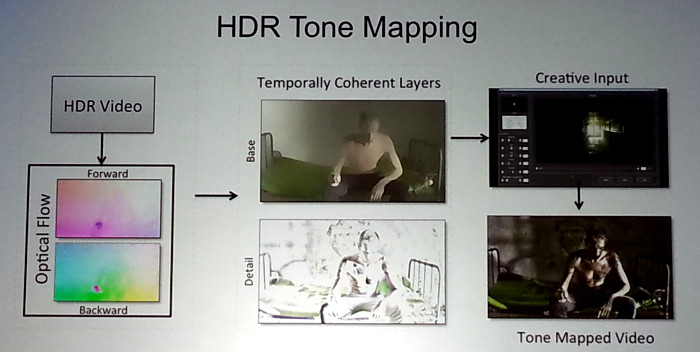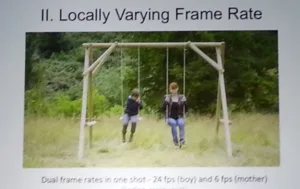Disney Research used TSC to describe the filming and processing techniques developed in the making of a short film called “The Dream of Gabriel”. The organization is working on a number of advanced film-making technologies and wanted to try them out on a real production. The results were impressive.
The film was produced on a small budget with a few actors on location in Switzerland using an Arri camera that captured RAW data at 120 fps. The post production process took 250 days as many new technologies were developed and refined in this period.
As part of the storyboarding process, Disney decided to try different frame rates for different aspects of the film. For example, normal reality would be captured and played back at 24 fps but elements that happen in the supernatural world or in lucid dream sequences would play back at 48 fps. Different shutter angles were used within these sequences as well.
The team has been working on a very innovative suite of technologies called “per pixel flow-of-time”. This allows for global and local (within the frame) frame rate variations; slow motion and retiming, artistic shutters (effects) such as a rainbow, motion strobe and motion/smoke effects, and compositing/temporal alignment. In addition, they were also able to demonstrate the use of high dynamic range tone mapping.
Global frame rates were implemented at 24 and 48 fps for use as a story telling tool. The local varying frame rate tool was amazing. This allowed, for example, the boy to swing at 24 fps while the mother, who is a ghost at this point in the story, swings at only 6 fps, creating a visually and emotionally compelling sequence (see photo).
Another interesting technique was called computational super slow motion. For this, Disney took frames captured at 120 fps and computed interframes to achieve an effective 1200 fps rate, but played back at 60 fps. This emulated the ability to capture at 1200 fps using a real 120 fps capture rate.
The special shutters or effects the team developed were particularly cool. These tools analyzed motion in frames and was able to add effects around the parts of the image that were in motion. Effects include a rainbow, smoke and motion strobing – all for artistic effect.
The HDR tone mapping workflow is shown in the graphic below.

Two versions of the film were produced at about 10 minutes each, but they were not shown at TSC, although they are posted on YouTube (look for Lucid Dreams of Gabriel). (https://www.youtube.com/watch?v=3zfV0Y7rwoQ)

